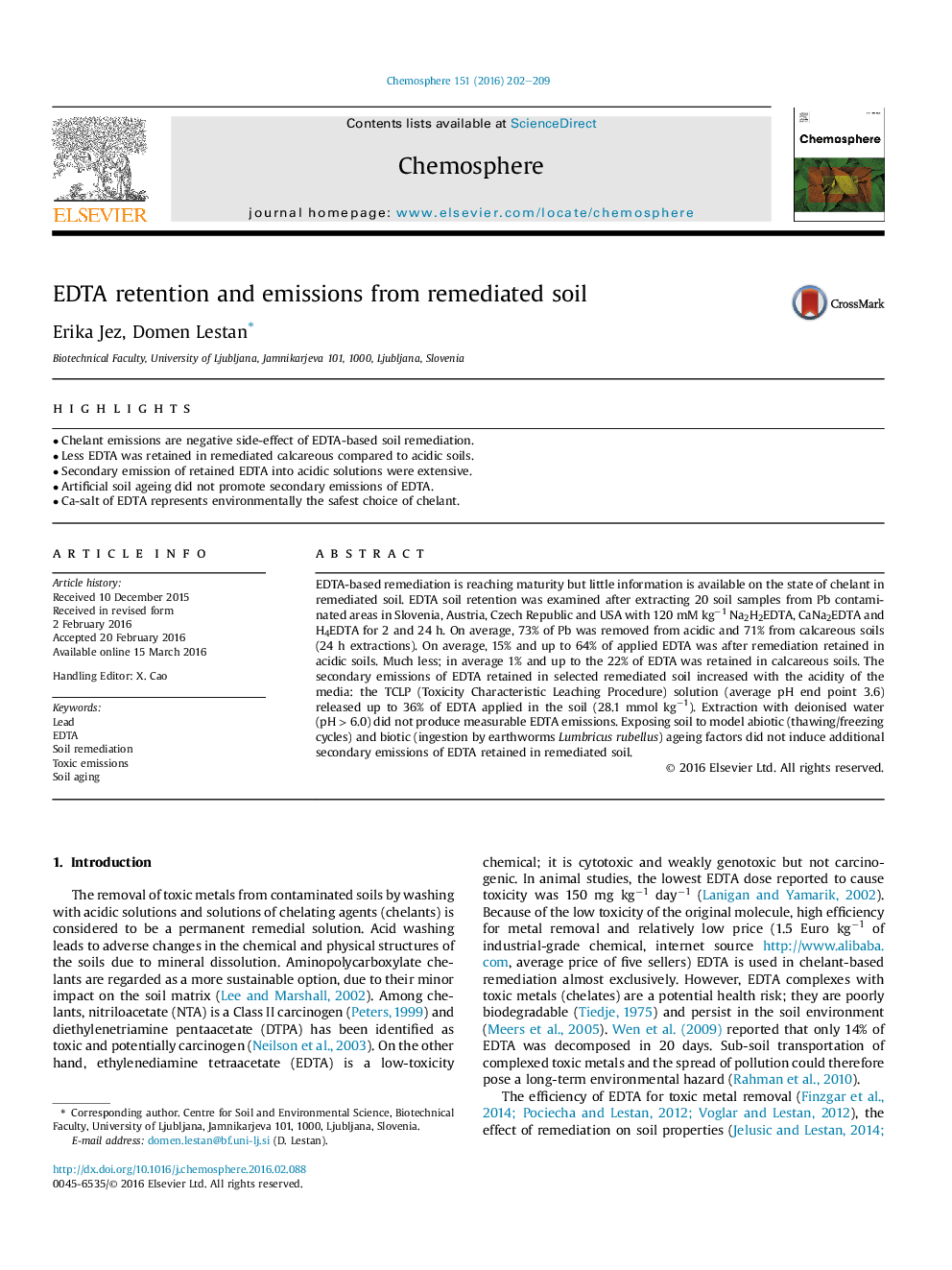| Article ID | Journal | Published Year | Pages | File Type |
|---|---|---|---|---|
| 4407787 | Chemosphere | 2016 | 8 Pages |
•Chelant emissions are negative side-effect of EDTA-based soil remediation.•Less EDTA was retained in remediated calcareous compared to acidic soils.•Secondary emission of retained EDTA into acidic solutions were extensive.•Artificial soil ageing did not promote secondary emissions of EDTA.•Ca-salt of EDTA represents environmentally the safest choice of chelant.
EDTA-based remediation is reaching maturity but little information is available on the state of chelant in remediated soil. EDTA soil retention was examined after extracting 20 soil samples from Pb contaminated areas in Slovenia, Austria, Czech Republic and USA with 120 mM kg−1 Na2H2EDTA, CaNa2EDTA and H4EDTA for 2 and 24 h. On average, 73% of Pb was removed from acidic and 71% from calcareous soils (24 h extractions). On average, 15% and up to 64% of applied EDTA was after remediation retained in acidic soils. Much less; in average 1% and up to the 22% of EDTA was retained in calcareous soils. The secondary emissions of EDTA retained in selected remediated soil increased with the acidity of the media: the TCLP (Toxicity Characteristic Leaching Procedure) solution (average pH end point 3.6) released up to 36% of EDTA applied in the soil (28.1 mmol kg−1). Extraction with deionised water (pH > 6.0) did not produce measurable EDTA emissions. Exposing soil to model abiotic (thawing/freezing cycles) and biotic (ingestion by earthworms Lumbricus rubellus) ageing factors did not induce additional secondary emissions of EDTA retained in remediated soil.
